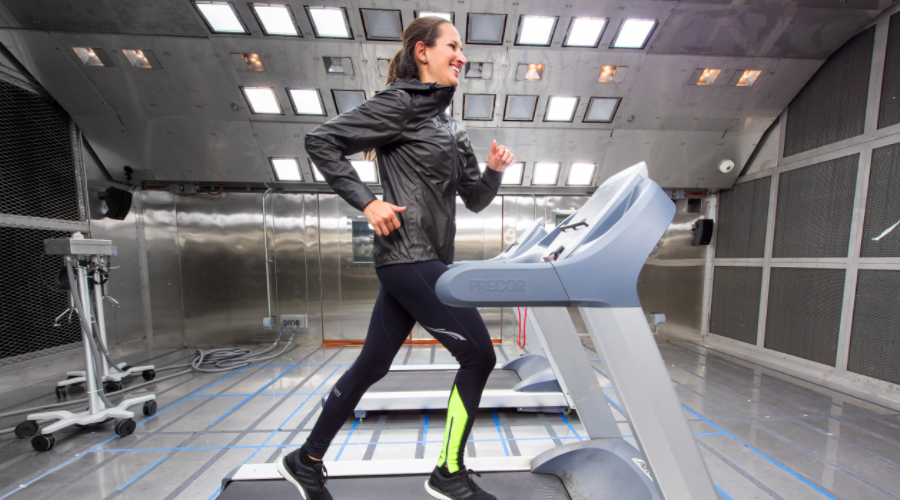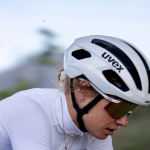“Gore’s new world-class facilities can simulate from the most common to the most extreme environmental conditions, from a cold, damp drizzle in Scotland to the scorching heat of a California wildfire,” said Paul Canatella, technical leader for Gore Fabrics Division. “By creating real-world conditions in a lab environment we can scientifically measure and analyze the impact of a product on human perception and performance in a controlled environment and then quickly apply that data to our product research and development efforts.”
Gore conducts testing in the biophysics lab to predict the effects of apparel, activity and environment on the human body. This state-of-the-art facility has the capabilities to measure performance, protection, breathability and comfort benefit for the end-user. The data and analytics gathered during the testing process are a critical component for understanding the potential impact on the end-user in a variety of relevant environmental conditions, i.e. exposure to heat and solar radiation, cold, rain or high wind. The impact is measured through benchtop testing, sensored mannequins and human testing in the environmental chamber.
The Environmental Chamber can simulate extreme environmental conditions through accurate control of temperature, relative humidity (5–98%), wind speed and natural solar radiation that can replicate a complete solar cycle. The Rain Tower can simulate realistic rainfall rates of up to 3 inches per hour, water and air temperatures ranging from 5–25 C and wind speed of up to 5 miles per second. This is critical in testing the impact of wind-driven rain on various aspects of water protection and comfort, such as how garment water gain affects the user perception of warmth and bulk.
Protection from heat and flames are tested in the heat and flame protection lab, where Gore analyzes thermal insulation and thermal stability in addition to “self-extinguishing” flame resistant functionality of materials. The Cone Calorimeter enables engineers to measure heat release characteristics of the fabrics used in finished garments, one of the most important variables to measure when developing garments that protect against heat and flame sources. The cone calorimeter also allows for measurement of smoke generated from a fire event involving these products.
Stored Thermal Energy Tester evaluates time to burn in low heat flux scenarios where a firefighter could experience sweat burns from standing outside the fire ground. This allows complementary insight to the additional reduction in protection in a flash-over fire scenario when a room or area is suddenly engulfed in flames from floor to ceiling. Pyrolysis Combustion Flow Calorimeter (PCFC)/Micro Combustion Calorimeter (MCC) allows rapid characterization of heat release and fire-preventing char generation in raw materials.
“The advanced capabilities of the heat and flame protection lab allow us to very quickly assess the performance of materials and rapidly generate and develop understanding and new technologies that enable us to better protect those that protect and serve all of us,” said Kip Sturgill, global technical leader for Gore’s protective fabrics business unit.
Photo courtesy W.L. Gore
















